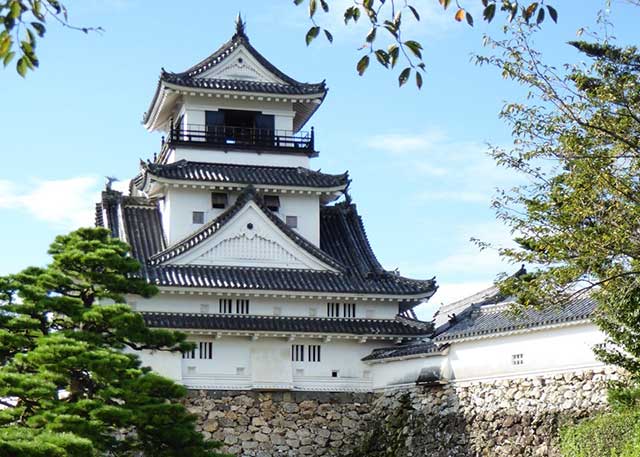
Kochi Castle is one of the 12 samurai castles with original keeps. Yamanochi Kazutoyo (Yamauchi Katsutoyo), who was granted Tosa Domain (modern-day Kochi Prefecture in Shikoku) after the Battle of Sekigahara in 1600, began constructing the castle and residence in 1601. The project took ten years, and the Yamanouchi clan remained at Kochi until the Meiji Restoration.
Kochi Castle makes excellent use of the land's layout. The Kagami and Enokuchi Rivers form a natural outer moat, with the castle perched on Mt. Otasaka. The main Honmaru bailey is situated on a rise to the south, with the Ni-no-Maru occupying the northern hill at a similar elevation. The Ni-no-Maru connects to the Honmaru via a corridor-like bridge called a roka-bashi across a small valley. Directly under the roka-bashi, blocking the valley, is the Tsume-mon gate. The layout deceptively suggests that the Tsume-mon is the entry to the Honmaru. However, any attacking enemy breaching this gate would find themselves heading away from the central precinct. While trying to breach the gate, they could be fired upon from the keep to their left, the gate above, and watchtowers to their right. Instead, entry to the Honmaru is to the right, up a flight of once heavily guarded stone stairs, through the Ni-no-Maru, and across the covered roka-bashi.
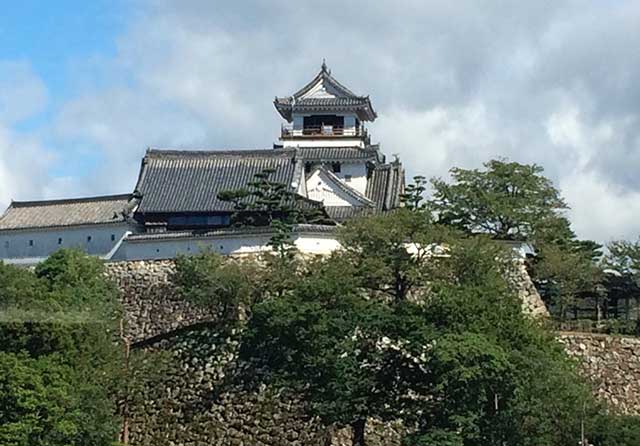
In 1727, many central structures, including the tenshu, were damaged by fire. Today, what remains is the rebuilt keep and palace from that period. The remaining tenshu was modeled on the original four-roofed, six-floor tower designed by Yamauchi Kazutoyo, who had wanted a mawarien, a balcony, and railing around the top floor. The reconstructed keep includes this feature. Around the bottom edge of the tenshu are tsuruge spikes called Shinobi Gaeshi, meant to prevent ninja and attackers from climbing the structure. These spikes are found only at Kumamoto, Nagoya, and Kochi Castles, with Kochi uniquely featuring trident-shaped spikes. Kochi Castle’s Honmaru Goten, the lord’s palace, is connected to the base of the main keep, a rare architectural feature. The living quarters occupy the first level of the main keep.
Kochi Castle’s Honmaru is particularly historically valuable, as it is the only castle with all its original structures—keep, palace, gates, and walls—still intact. A total of 15 structures designated National Important Cultural Properties remain at Kochi Castle, including the tenshu, Kaitokukan Honmaru Palace, Nando storehouse, nishi and higashi tamon yagura, Ote, Kurogane, and Roka gates, six wall segments, and the roka-bashi linking the Honmaru to the Ni-no-Maru.
See also
-
Ikeda Castle
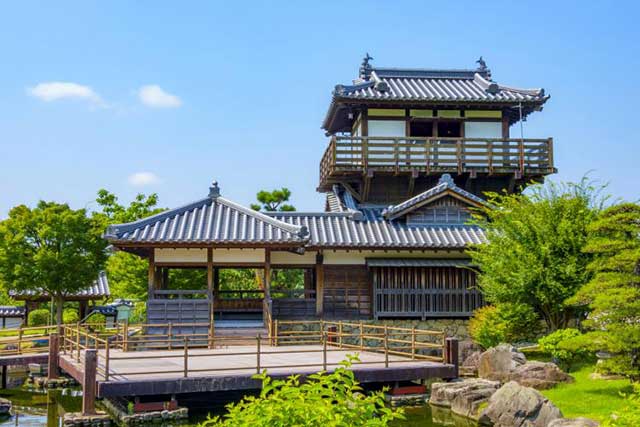
In 1334, Ikeda Noriyoshi built a small fort on this site, which over time was repeatedly expanded and rebuilt. During the Ōnin War of 1467–1477, the Ikeda clan supported the Western Coalition. As a result, Ikeda Castle was attacked and captured by the forces of the Eastern Coalition, but it was soon recaptured, allowing it to avoid serious destruction.
-
Aizu-Wakamatsu Castle
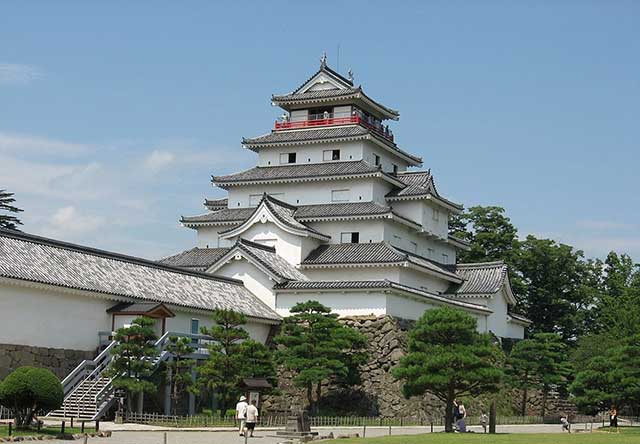
Aizu-Wakamatsu is the most powerful and at the same time the oldest castle in the Tōhoku region in the north of Honshu Island. Its history begins in the 14th century and is closely connected with the Ashina clan, whose members claimed descent from the legendary Taira family.
-
Maruoka Castle
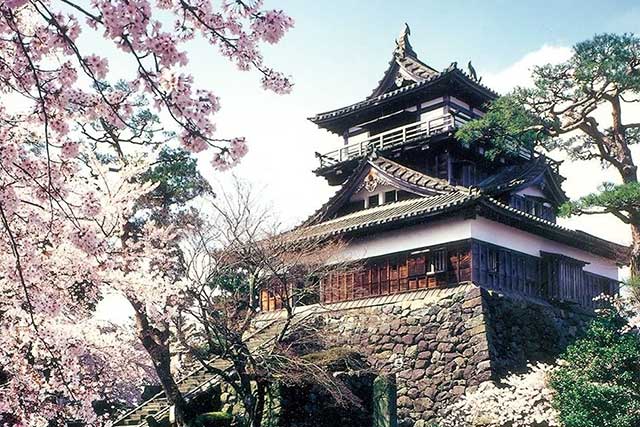
Maruoka Castle is located in the central part of the former city of Maruoka, which is now part of the city of Sakai. This area lies in the northeastern part of Fukui Prefecture. The castle was built on the bank of the Kuzuryu River, on the side opposite Fukui City, which once served as the administrative center of the former Echizen Province. Thanks to its location, Maruoka held significant strategic importance, as it controlled two major routes at once: the Hokurikudo highway leading from Kaga Province and the Mino Kaido road connecting these lands with Mino Province.
-
Marugame Castle
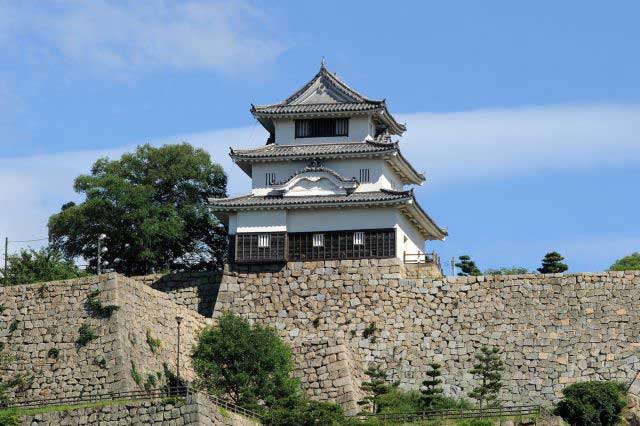
Marugame is part of the so-called “Authentic Dozen,” a group of twelve castles whose donjons have survived to the present day without major reconstructions since the Edo period.
-
Iyo Matsuyama Castle
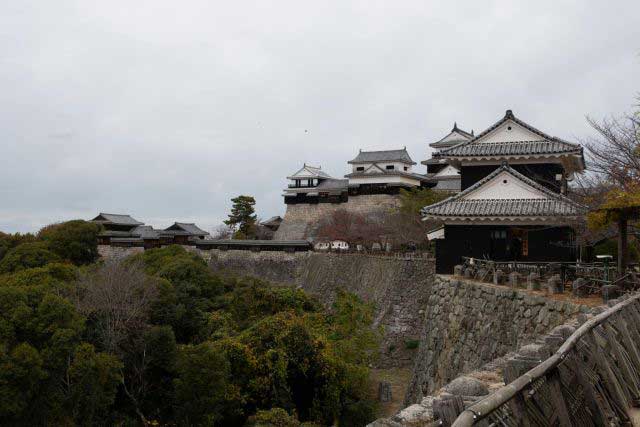
Historically, the center of Iyo Province—corresponding to today’s Ehime Prefecture on the island of Shikoku—was the city of Imabari, while the Matsuyama area was regarded as an agricultural hinterland with broad plains and low hills. During the Muromachi period, the central part of the province was governed by the Kano clan from Yuzuki Castle. With the onset of the Sengoku period, however, this clan lost its former influence and was forced to survive in the shadow of the more powerful Mori and Chōsokabe clans. After Toyotomi Hideyoshi’s forces conquered Shikoku in 1587, the northern part of Iyo Province was granted to Fukushima Masanori, one of the so-called “Seven Spears of Shizugatake.” In 1595, Masanori was transferred to Kiyosu Castle, and the lands around Matsuyama were given to another of the Seven Spears, Katō Yoshiaki, who received Masaki Castle and an income of 60,000 koku of rice.
-
Kanazawa Castle
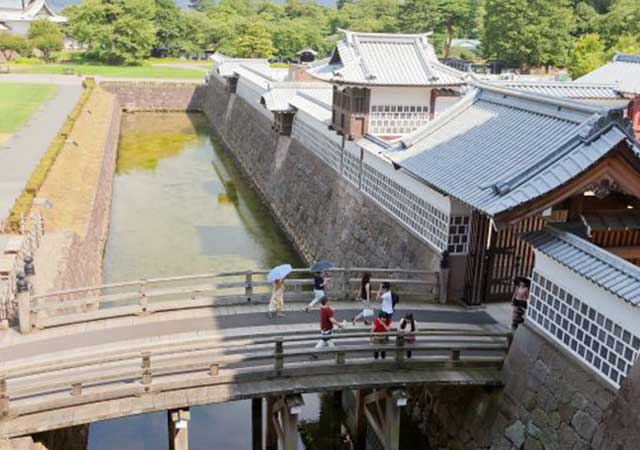
Construction of Kanazawa Castle began in 1580 on the orders of Sakuma Morimasa, a vassal of Oda Nobunaga. The castle was built on the site of the Ikko-ikki sect's Oyama Gobo temple, which is why it is sometimes called Oyama Castle. Morimasa managed to build several moats and begin construction of a castle town. However, after his defeat at the Battle of Shizugatake in 1583, he was executed, and ownership of the castle passed to Maeda Toshiie (1538–1599).
-
Nakatsu Castle
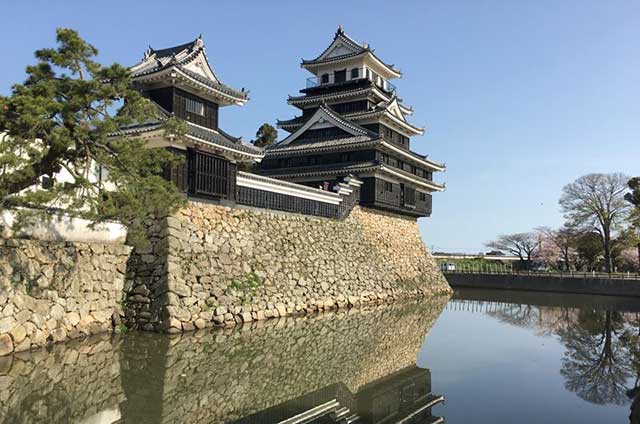
Kuroda Yoshitaka (1546–1604) was one of the closest advisors to the legendary military commander Toyotomi Hideyoshi. He took part in key military campaigns of the late 16th century, including the campaign against Shikoku in 1585 and the campaign against Kyushu in 1587. Later, during the second campaign in Korea, Yoshitaka served as chief advisor to the commander of the invasion forces, Kobayakawa Hideaki. After Hideyoshi's death, he swore allegiance to Tokugawa Ieyasu, thereby securing his influence and patronage under Japan's new leader.
-
Edo Castle
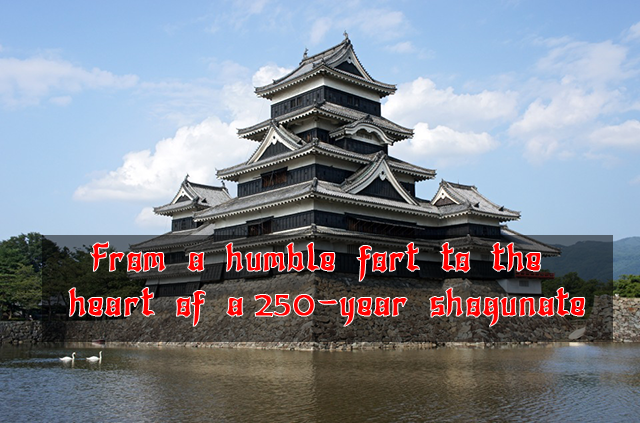
The history of Edo Castle dates back to the Heian period, when the Edo clan built a small fort on this site. In 1457, the vassal of the Uesugi clan, Ota Dokan (1432–1486), constructed a full-scale castle here. Internal conflicts weakened the Uesugi clan, and in 1524, Ota Dokan’s grandson, Ota Yasutaka, surrendered the castle without resistance to the forces of Hojo Soun, the ambitious leader of the Hojo clan. While Odawara Castle remained the clan's main stronghold, Edo was considered a key strategic fortress.

